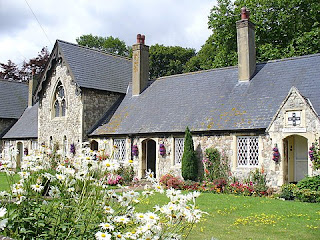He did, however, want to re-create the North Sea Empire of Cnut (England, Denmark, Norway). He managed to become king of Denmark at the death of Harthacnut because of a treaty they made not long before. Harthacnut had been king of both Denmark and England because of his father, Cnut. Harthacnut's death, however, did not automatically make Magnus his successor in England. The English nobles chose as Harthacnut's successor the son of Æthelred the Unready, whom Cnut had defeated. That son was Edward, later nicknamed "the Confessor" (first mentioned here in my pre-graphics days).
Curiously, Emma of Normandy (Æthelred's widow and Cnut's second wife) seemed to prefer Magnus over her own son. Edward confiscated her property on the rumor that she was promising to assist Magnus in his bid for the English throne. Still, the English nobles did not want Magnus, and his message to Edward that he was going to attack with an army of Danish and Norwegian men did not persuade anyone in England that this was a desirable plan.
Magnus had other issues than England. His uncle, Harald Hardrada, was contesting Magnus' rule in Norway. Sweyn Estridsen, who had challenged Magnus for Denmark and had been assuaged with a lieutenant's role in that country, continued to be hostile to Magnus. Harald and Sweyn made an alliance. Magnus, uncertain of his ability to definitively deal with Harald (without causing larger problems) made Harald co-king in Norway as of 1046. For his further interference, Sweyn was driven from Denmark by late 1046.
Things might have settled down. Magnus was now in his early 20s and ready to go for an English victory. On 25 October, 1047, however, he died—and we're not certain how. Reports vary: he was preparing a navy to attack England and fell off one of the boats and drowned, or he became ill while he was on a ship, or he fell off a horse. In a supposed declaration on his deathbed (which would preclude the drowning scenario) he proclaimed Sweyn his successor in Denmark and Harald in Norway. Whether he wanted that outcome, that is what happened.
He was buried near his father in Nidaros Cathedral.
So it looked like Edward would have no trouble about securing the throne? Ah, if only. See you tomorrow.




























